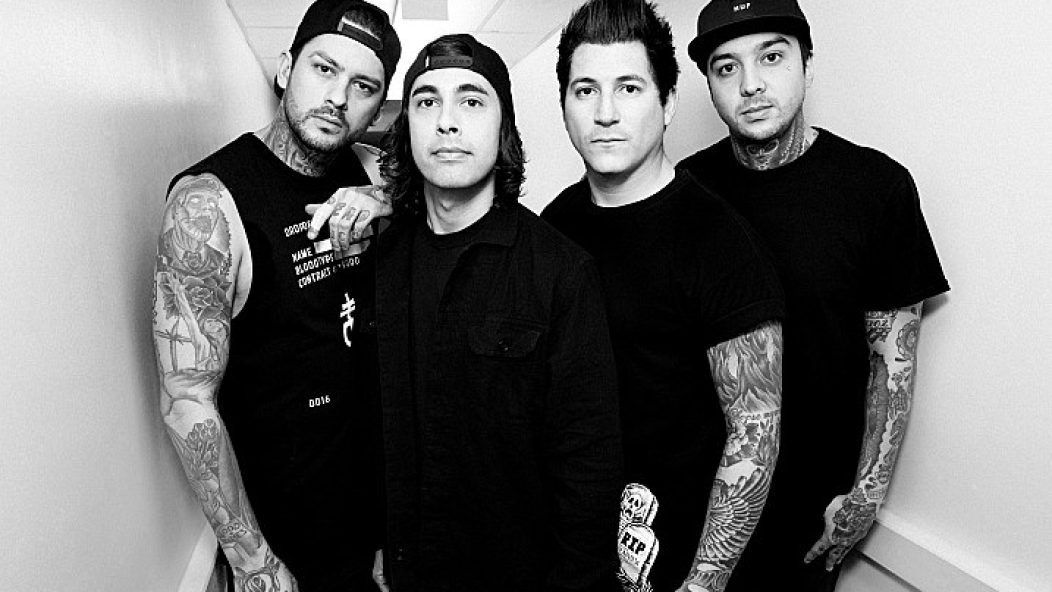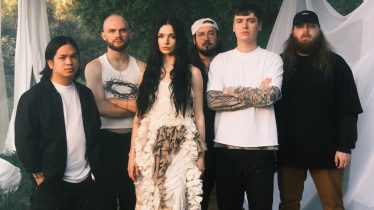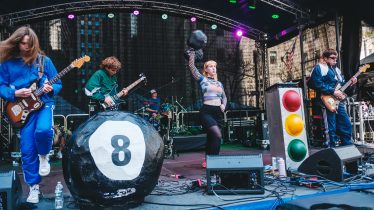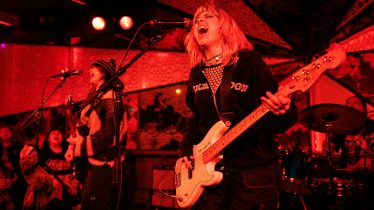
Vic Fuentes: A string quartet on Pierce The Veil's Green Day cover was “a dream come true"
Pierce The Veil have been asked to do Green Day covers in the past, but none have ever worked out. It wasn’t until Spotify approached the San Diego natives, letting them choose any song from the fellow Californians’ first three records, that Vic Fuentes and his bandmates obliged.
Inspired by Green Day’s early work, Pierce The Veil landed on “Coming Clean”—the anthemic alliterated track that reads like a confessional, resting in the latter half of the band’s iconic third album, Dookie.
The cover was recorded after the Rest In Space Tour at the Village Studios in Los Angeles, where the band’s label has a permanent residency with an in-house producer. Pierce The Veil celebrated the song with simplicity, stripping it down and letting the self-aware lyrics—“I found out what it takes to be a man/Now mom and did will never understand”—speak through Fuentes’ raw vocals to a new generation of kids. The result is bolstered by a captivating string quartet.
“I wanted to do it acoustic because the songs are already so rock and punk rock,” Fuentes says. “I don’t really know what we could add to it. That song has a really nice bounce to it and a nice rhythm, and I love the lyrics. It sounds like a confused young kid.”
Spotify recently launched a new series called “Green Day: The Early Years.” It features an episodic documentary chronicling the Bay Area punks’ journey from Gilman Street to their major label and mainstream debut, Dookie. To illustrate Green Day’s obvious influence on the alternative scene today, All Time Low, Neck Deep, Taking Back Sunday, Bayside and, of course, Pierce The Veil have all recorded covers of Green Day classics for the series.
1994’s “Coming Clean” is a one minute and 35 second coming-of-age love note, rushed like teenage confusion and over before you can say “adulthood.” Twenty-plus years later and Pierce The Veil’s “Coming Clean” is an introspective pop-punk lullaby, replacing the disorienting melodies with a feeling of acceptance.
“As I was playing it acoustic, the guys were like, ‘It sounds cool because it almost sounds sad and melancholy,’” Fuentes says. “It really brings out the lyrics of what he’s saying. I never really realized what he was saying until I broke it down and played it slowly.
“It’s a confused song—trying to work through something—and that’s cool,” he continues.
The “Coming Clean” recording session was the first time Pierce The Veil worked with real strings, an experience Fuentes calls “a dream come true.”
“It seems like such a big, unreachable thing, and we were finally like, ‘Let’s get some strings on this—a real string quartet,’” Fuentes says. “[The string quartet] are really hard working people, who play on all kinds of things.
“We hired them, and they wanted me to score it for them,” he continues. “They wanted me to write out the notes, and I had no idea how to write out music because I play by ear.”
Fuentes instead sent over what he had written on the computer, and the quartet scored it.
“It was so rad to be able to in the room and hear real strings play to that song,” Fuentes says. “It was super cool.”
Fuentes was always attracted to Dookie: He remembers his friends learning to play guitar with it and being mesmerized by the intricate, illustrated album cover.
“I don’t think I got in-depth into the album, musically, until I was a little older and really dissected what was going on,” Fuentes says. “That record was one of the first records to make me realize that it’s okay to play power chords in your music.
“I remember, growing up, I always wanted things to be more complicated,” he continues. “I wanted to play like jazz chords and have everything be intricate. I think that record was one of the first ones that made me realize, ‘You know what? If everyone just plays one power chord at the same time, it sounds huge.’”
Pierce The Veil just kicked off a huge tour this spring with Sum 41, Emarosa and Chapel.
“Overall, it was a pleasant, fun experience,” Fuentes says. “I wanted to have a thing that we could look back on in our career and be like, ‘Oh, remember when we did that awesome Green Day cover? That was really fun.’”








